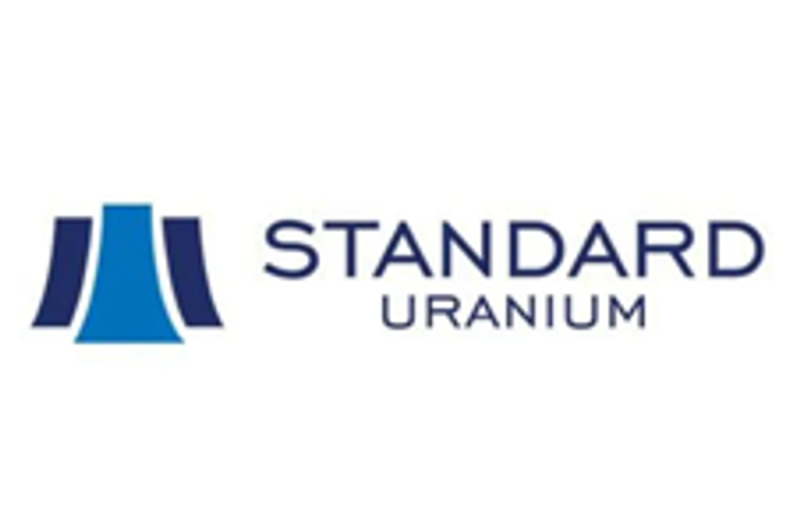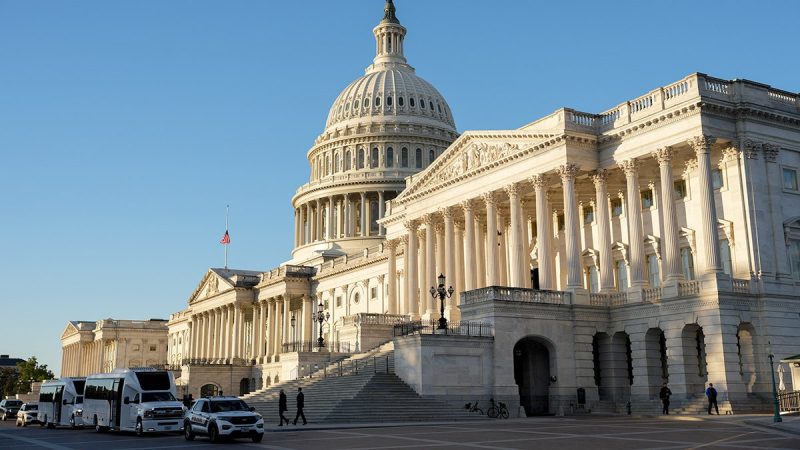Investor Insight
Standard Uranium offers high-grade uranium discovery potential in the Athabasca Basin. With a fully funded drill program scheduled for spring 2026 at its flagship Davidson River project, and joint ventures on other highly prospective projects, the company provides investors early stage exposure to the emerging nuclear energy market.
Overview
Standard Uranium (TSXV:STND,USOTC:STTDF,FRA:9SU0) is a uranium exploration and project generation company focused on advancing high-grade uranium discoveries within the world-famous Athabasca Basin in Saskatchewan, Canada.
With a mission to “supply the fuel for a clean energy future,” Standard Uranium is focused on discovering and developing basement-hosted and unconformity-related uranium deposits that can power the growth of nuclear energy. Its dual-track model combines aggressive exploration at its flagship Davidson River project with a robust project generator platform, advancing multiple projects through partnerships while generating non-dilutive cash flow in operator fees, share payments, and royalties.
With 13 projects totaling more than 235,000 acres, Standard Uranium offers investors exposure to both immediate discovery catalysts and long-term portfolio value. Its leadership team brings deep geological expertise and operational experience across the Athabasca Basin, complemented by disciplined capital management.
As global governments reaffirm nuclear energy’s role in achieving net-zero targets, Standard Uranium is positioned to capitalize on the growing demand for secure, high-grade uranium supply from Canada.
Company Highlights
- Flagship Davidson River Project: Large-scale, high-priority exploration asset in the southwest Athabasca Basin, along trend from NexGen’s Arrow and Paladin Energy’s Triple R uranium deposits, positioned for a significant uranium discovery.
- Extensive Portfolio in the Athabasca Basin: Over 235,000 acres (95,000+ hectares) across 13 projects in Canada’s premier uranium district, including active joint ventures at Sun Dog, Corvo, and Rocas.
- Project Generator Model: Leverages strategic partnerships to fund exploration and generate cash flow while retaining upside through 25 percent ownership and a 2.5 percent net smelter return (NSR) royalty on joint-venture projects.
- Fully Funded for Davidson River Drill Campaign: Financing completed to support 8,000 to 10,000 meters of drilling at Davidson River, planned for spring 2026.
- Rocas Drill Program: The first-ever drill program to be conducted on Rocas will commence in winter 2026, comprising approximately 1,800 metres.
- Corvo Drill Program: A skid-assisted diamond drill program totalling approximately 3,000 metres is planned for winter 2026, which will mark the first drill program on the Project in more than 40 years.
- Riding the Nuclear Power Renaissance: Positioned to benefit from global decarbonization trends and a long-term rise in uranium demand.
- Proven Team: Led by experienced geologists and exploration professionals with a track record of discoveries in the Athabasca Basin.
Key Projects
Davidson River Project
Located in the southwest Athabasca Basin, approximately 25 kilometres west of NexGen’s Arrow deposit and Paladin Energy’s Triple R deposit, the Davidson River project spans 30,737 hectares across 10 contiguous mineral claims. The property lies along the same structural trends that hosts these globally significant discoveries.
To date, Standard Uranium has drilled 16,561 metres across 39 holes, intersecting wide, graphitic-sulphidic shear zones, structural deformation, and alteration features characteristic of high-grade basement uranium systems. Recent multiphysics and machine learning-assisted surveys conducted in partnership with Fleet Space Technologies and GoldSpot Discoveries have provided new three-dimensional imaging of subsurface structures, identifying refined targets along the Warrior, Bronco and Thunderbird corridors.
The company is preparing for an 8,000 to 10,000-meter diamond drill campaign scheduled for spring 2026, marking its most comprehensive program to date. With modern targeting data and strong geological indicators, Davidson River represents the company’s clearest path to a transformational discovery in the southwest Athabasca Basin.
Sun Dog Project (JV)
Located in the northwestern Athabasca Basin near Uranium City, the Sun Dog project consists of nine mineral claims totaling 19,603 hectares. This highly prospective property sits in a historically productive uranium district that remains underexplored by modern methods.
Surface sampling has identified several uranium-rich showings, including modern grab samples returning grades up to 3.58 percent U₃O₈. The project’s targets are associated with structural intersections and alteration zones consistent with basement-hosted and unconformity-related uranium systems.
Standard Uranium has partnered with Aero Energy, under a three-year earn-in agreement, allowing Aero to acquire up to a 100 percent interest in the project. The partnership structure ensures ongoing advancement at Sun Dog with Standard Uranium retaining a 2.5 percent NSR royalty, providing continued exposure to discovery success without direct funding requirements.
Corvo Project (JV)
The Corvo project in the eastern Athabasca Basin covers 12,265 hectares and represents one of Standard Uranium’s most promising partner-funded assets. The project lies along three major magnetic low and EM conductor trends extending for nearly 29 kilometres of prospective strike length.
The project is currently being advanced under a joint venture with Aventis Energy, which is funding exploration work through a three-year earn-in agreement. Standard retains a 25 percent ownership interest and a 2.5 percent NSR, while acting as operator during the earn-in phase.
Historical drilling and sampling have confirmed uranium mineralization, including the “Manhattan” showing, where modern surface grab samples collected by the company in 2025 returned assays up to 8.10 percent U3O8. These results highlight the property’s potential to host near-surface, high-grade uranium deposits.
Rocas Project (JV)
The Rocas project, located in the southeastern Athabasca Basin region, lies approximately 75 km southwest of the Key Lake mine and mill and covers 4,002 hectares along a 7.5-km northeast-trending magnetic low and EM conductor corridor.
Surface exploration has confirmed uranium mineralization at outcrop, with historical grab samples grading up to 0.5 percent U₃O₈ across nearly 900 metres of strike length. Historical surveys have also identified lakebed geochemical anomalies and structural features that indicate potential zones of hydrothermal alteration, ideal settings for basement-hosted uranium deposits.
In 2025, Standard Uranium executed an option agreement with Collective Metals, granting the partner 75 percent earn-in over three years in exchange for staged cash payments, share issuances, and $4.5 million in exploration spending. Standard retains a 25 percent ownership interest and a 2.5 percent NSR, while acting as operator during the earn-in phase.
Eastern Athabasca Exploration Projects
Beyond its flagship and joint-venture assets, Standard Uranium holds eight additional exploration-stage properties across the eastern Athabasca Basin, including Ascent, Canary, Atlantic, Cable Bay, Ox Lake, Umbra, Brown Lake and Sable. Together, these projects cover over 43,000 hectares of highly prospective ground along established uranium trends near recent discoveries by Denison Mines and IsoEnergy.
These projects represent the company’s pipeline of future partnerships and discovery opportunities, ensuring consistent exploration activity across the Basin.
Management Team
Jon Bey – Chairman, CEO, and Director
Jon Bey is a capital markets executive with over two decades of experience in the junior exploration industry. Bey has explored for uranium, gold, silver, diamonds and oil and gas in the Americas, Europe, Asia and Africa. He has public company experience across several sectors and with companies listed on the TSX, TSXV, CSE and LSE exchanges. Bey is the chairman of Ophir Metals and the founder and managing director of the Steel Rose Group of companies.
Sean Hillacre – President & VP Exploration
Sean Hillacre has over a decade of experience as an economic geologist in the Athabasca Basin uranium district, including five years at NexGen Energy as part of the technical team progressing the Arrow uranium deposit toward production. A high-energy, results oriented geoscientist, Hillacre brings a unique and balanced background integrating academic geoscience with industry experience, along with a comprehensive understanding of project development.
Vivien Chang – Chief Financial Officer
Vivien Chuang is a chartered professional accountant (BC, Canada) with more than 15 years of experience in the resource and mining sector. She was a former CFO of Azincourt Energy, BluEnergies, Muzhu Mining, and Northern Empire Resources, K2 Gold Corporation and Chakana Copper (formerly Remo Resources). Currently, she is VP Finance of Jasper Management and Advisory and president of VC Consulting, which provides CFO and other financial accounting and compliance services to a number of companies.
Neil McCallum – Lead Technical Director
Neil McCallum has over 15 years of experience primarily in North American mineral deposit exploration, with a focus on targeting and discovery of unconformity-related uranium deposits. He is currently a project manager at Edmonton-based Dahrouge Geological Consulting. McCallum has managed and conducted uranium exploration in and around the Athabasca Basin and other jurisdictions for multiple companies.




![The Senate is once again finding a moment of bipartisan unity in its fury over a recently-passed law that would allow lawmakers to sue the federal government and reap hundreds of thousands of dollars in taxpayer money as a reward.
Lawmakers on both sides of the aisle continue to grapple with the inclusion of a provision in a package designed to reopen the government that would allow only senators directly targeted by the Biden-led Department of Justice (DOJ) and former special counsel Jack Smith’s Arctic Frost investigation to sue the U.S. government for up to $500,000.
Both Senate Republicans’ and Democrats’ ire at the provision is multi-pronged: some are angry that it was tucked away into the Legislative branch spending bill without a heads-up, others see it as nothing more than a quick pay day for the relatively small group of senators targeted in Smith’s probe.
‘I think it was outrageous that that was put in and air dropped in there,’ Sen. Gary Peters, D-Mich., told Fox News Digital. ‘It’s outrageous. It’s basically just a cash grab for senators to take money away from taxpayers. It’s absolutely outrageous, and needs to be taken out.’
The provision was included in the spending package by Senate Majority Leader John Thune, R-S.D., on request from lawmakers in the GOP. And it was given the green light by Senate Minority Leader Chuck Schumer, D-N.Y.
The provision is narrowly tailored to just include senators, and would require that they be notified if their information is requested by the DOJ, be it through the subpoena of phone records like in the Arctic Frost investigation or through other means. The idea is to prevent the abuse of the DOJ to go after sitting senators now and in the future.
Thune pushed back on the notion that lawmakers weren’t aware the provision was in the bill, given that the entire package was released roughly 24 hours before it was voted on, but acknowledged their frustration over how it was added was warranted.
‘I think I take that as a legitimate criticism in terms of the process, but I think on the substance, I believe that you need to have some sort of accountability and consequence for that kind of weaponization against a co-equal branch of the government,’ Thune said.
Schumer, when asked about the anger brewing on both sides of the aisle, heaped the blame on Thune, but noted that it was an opportunity to get protection for Democrats, too.
‘Look, the bottom line is Thune wanted the provision, and we wanted to make sure that at least Democratic senators were protected from [Attorney General Pam] Bondi and others who might go after them,’ Schumer said. ‘So we made it go prospective, not just retroactive, but I’d be for repealing all the provision, all of it. And I hope that happens.’
The House is expected to vote on legislation that would repeal the language, and many in the upper chamber want to get the chance to erase the provision should it pass through the House. Whether Thune will put it on the floor remains in the air though.
Sen. Josh Hawley, R-Mo., was one of the eight senators whose records were requested during Smith’s probe. He told Fox News Digital that he was neither asked about the provision, nor told about it, and like many other lawmakers, found out about it when he read the bill.
‘I just think that, you know, giving them money –- I mean making a taxpayer pay for it, I don’t understand why that’s accountability,’ he said. ‘I mean, the people who need to be held accountable are the people who made the decisions to do this, and, frankly, also the telecom companies. So I just, I don’t agree with that approach.’
He also took issue with the fact that the provision was narrowly tailored to only apply to the Senate, and argued that it could be reworked to only provide for declaratory judgement in court rather than a monetary one.
‘I could see the value of having a court say this was illegal and ruling against the government,’ Hawley said. ‘I think it’s the monetary provisions that most people, including me, really balk at. Like, why are the taxpayers on the hook for this, and why does it apply only to the Senate?’
The provision set a retroactive date of 2022 to allow for the group of senators targeted in Smith’s Arctic Frost probe to be able to sue. That element has also raised eyebrows on both sides of the aisle.
Sen. James Lankford, R-Okla., told Fox News Digital that he supported repealing the provision, but wanted to fix it.
‘The best way to be able to handle it, I think, is to be able to fix it, take away the retroactivity in it,’ he said. ‘The initial target of this whole thing was to make sure this never happened again.’
Sen. Andy Kim, D-N.J., told Fox News Digital that the provision was a ‘total mess,’ and raised concerns on a bipartisan basis.
Not every Senator was on board with ditching the provision, however.
Sen. Lindsey Graham, R-S.C., made clear that he intends to sue the DOJ and Verizon, his phone carrier, and argued that he didn’t believe that the provision was self-dealing but rather to deter future, similar actions. He also wants to take the provision, or the core idea of it, a step further.
Graham said that he wanted to open up the process to others, including dozens of groups, former lawmakers and others affected by the investigation.
‘Is it wrong for any American to sue the government if they violated your rights, including me? Is it wrong if a Post Office truck hits you, what do you do with the money? You do whatever you want to do with the money,’ Graham said.
‘If you’ve been wronged, this idea that our government can’t be sued is a dangerous idea,’ he continued. ‘The government needs to be held accountable when it violates people’s rights.’
Sen. Ted Cruz, R-Tx., was far more succinct. When asked if he would support a repeal of the provision, he told Fox News Digital, ‘No.’
This post appeared first on FOX NEWS Senators rail against ‘cash grab’ spending bill provision as House preps repeal vote](https://investmentjourneys.com/wp-content/uploads/2025/11/senate-majority-leader-john-thune-pass-800x450-2.jpg)




